#mhev
Explore tagged Tumblr posts
Text
#볼보xc90 볼보자동차코리아가 7월에 출시할 신형 XC90의 판매 트림과 가격을 발표하고 사전예약을 시작했습니다. 신형 XC90은 두 번째 2세대 부분변경 모델로, 주요 디자인 요소를 현대적으로 손질하고 대형 인포테인먼트 스크린과 새로운 사용자 환경을 반영하는 등 신선함을 더했습니다.
#3-row seat suv#3열 좌석 suv#all-wheel drive#AWD#네 바퀴 굴림#마일드 하이브리드#볼보#볼보 xc90#사륜구동#플러그인 하이브리드#mhev#phev#SUV#volvo cars#volvo xc90#xc90
1 note
·
View note
Text

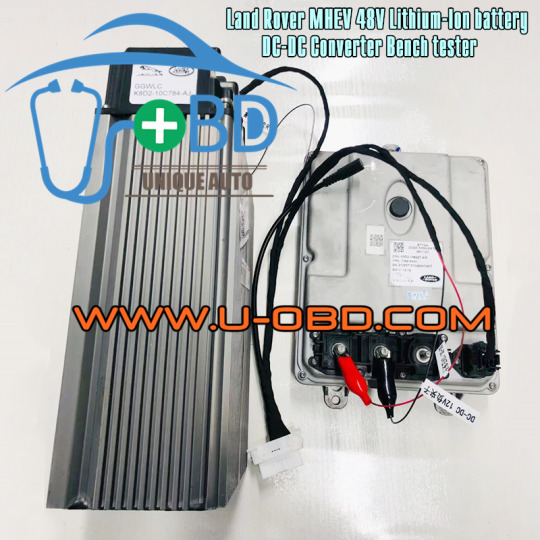

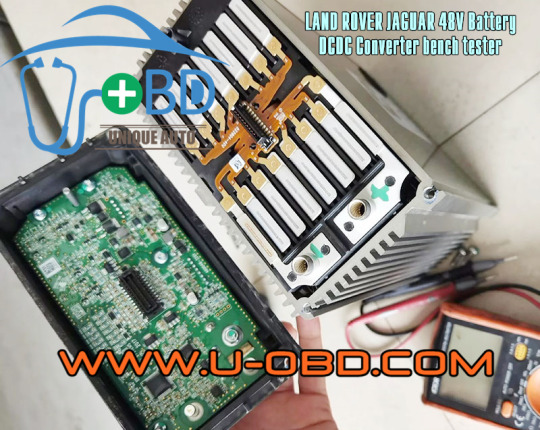
https://www.u-obd.com/product/jlr-mhev-bench-tester/ LAND ROVER Mild-Hybrid car 46.2V lithium battery BECM, 48V-12V DCDC Converter EPICD-DCDC test bench. #landrovermhev #jlrmhev #landrover48v #EPICD #becm #landroverbattery #JLRmildHybrid #landroverdcdc #landroverconverter #LandRoverHybrid #k8d210c784 #k8d214b227
1 note
·
View note
Text
0 notes
Text
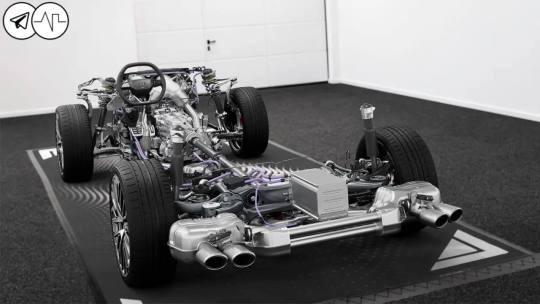
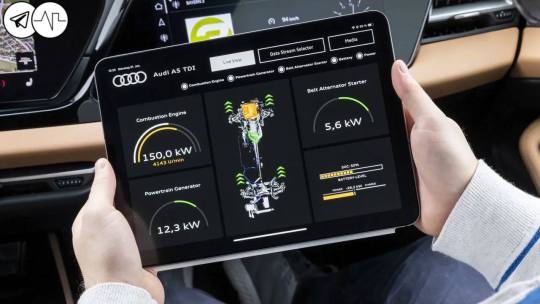
Audi ha creado una nueva plataforma híbrida, superando a Mercedes.
Audi ha desarrollado la arquitectura MHEV Plus, que incluye un motor eléctrico de 240 CV, una batería de 48 voltios y un generador de arranque por correa. La unidad le permite moverse en un rango eléctrico de hasta 140 km/h, recargando efectivamente la batería mediante la recuperación de energía durante el frenado.
La tecnología se basa en las soluciones híbridas Mercedes-AMG, pero Audi ha logrado hacer que el sistema sea más liviano y compacto, lo que le da una ventaja en eficiencia e integración en los automóviles.
0 notes
Text
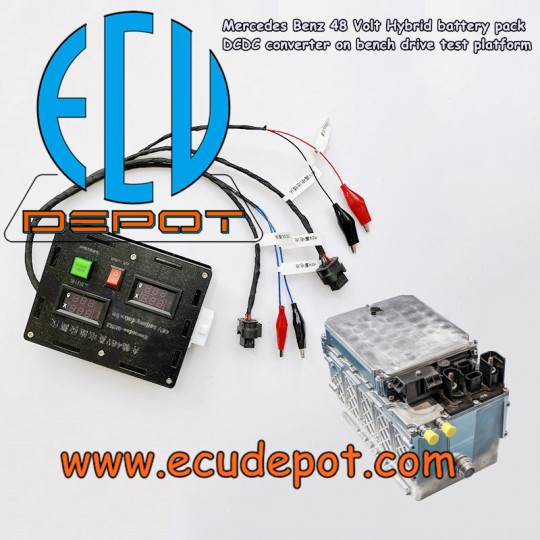


Mercedes-Benz W205, W213, W222, W167 Mild-Hybrid car 48 Volt Lithium battery pouch DC-DC Inverter bench tester: https://ecudepot.com/product/mb-48v-test-platform/
w205class #w213eclass #w222sclass #w167gle #MHEV #MercedesBenzMHEV #mercedesbenz48v #mercedes48vbattery #dcdcinverter #48VbatteryTester #mildhybrid #bmsboard
0 notes
Text
Discover the new Audi A6 Avant 2026
If you are looking for a car that combines luxury, technology and performance, the new Audi A6 C9 Avant 2026 is the ideal choice! With an elegant design, a high-tech interior and efficient
engines, this model redefines the standards in its class.
✔️ Dynamic design and advanced aerodynamics ✔️ Premium interior with OLED technology and extensive customization ✔️ Efficient engines, including mild hybrid MHEV plus ✔️ Generous trunk and smart functions
Whether you are planning a getaway outside the city or looking for a rental car for daily needs, the A6 Avant 2026 is ready to impress you!
Learn more about this impressive model in the article on our blog from PHP rent a car Cluj.




#audi#audia6#audia6avant#audia6avantc9#A6Avant#rentacar#RentACarCluj#inchirieriauto#inchirieriautocluj
2 notes
·
View notes
Text





15/12/2022: Rovering
I’m very fortunate to have a generous family (in-laws) and I was gifted an advanced Land Rover experience at Eastnor and in parallel to this my father will be testing a new Discovery as he’s in the market for one. I on the otherhand will be driving a ‘new’ defender.
Vehicle models to be precise are
2022 Discovery R Dynamics SE D MHEV
2022 Defender SE D MHEV
Today was incredible! I had been looking forward to this ever since I completed the Full Day experience. This next level promised to elevate driving skills and dive deeper into advanced techniques, practical tips, and crucial recovery skills.
Morning Briefing:
The day started with a detailed briefing from our dedicated Land Rover off-road expert. He walked us through the vehicle's key features and the challenges we would face. It was fascinating to learn about the advanced capabilities of the vehicle and the techniques we would need to master.
Behind the Wheel:
Once behind the wheel, we navigated a variety of terrains throughout the Eastnor estate, including inclines, descents, water, low traction surfaces, rock crawls, and wheel articulation sections. Each obstacle was a new challenge, pushing me to apply and refine skills.
Expert Guidance:
Throughout the day, our guided was encouraging me to make key decisions and master advanced driving techniques. His hands-on approach was incredibly supportive and boosted my confidence immensely. By the end of the day, I had a much deeper understanding of off-road driving.
I pushed my limits and discovered just how much I am capable of. I can't wait to see where this new level of skill will take me next!
Highly recommended!
2 notes
·
View notes
Text
What Role Does Mild-Hybrid Technology Play in the Latest Range Rover Engines?

The evolution of the Range Rover engines has taken a significant leap with the integration of mild-hybrid technology in its latest lineup. As global environmental concerns increase and emission standards tighten, automakers are turning toward electrification. Mild-hybrid systems have emerged as a practical and efficient solution, offering a balance between traditional internal combustion and full electrification. Unlike full hybrids or plug-in variants, mild-hybrids use a small electric motor to assist the engine without ever powering the vehicle independently. For Land Rover, mild-hybrid technology provides the luxury, power, and off-road capability expected of a Range Rover while enhancing efficiency and performance. This article explores how this advanced technology is implemented in the latest models, its key benefits, and how it compares to previous engines. Additionally, we discuss how reconditioned engines play a role in making these innovations more accessible to existing Range Rover owners. If you're curious about how mild-hybrids redefine the Range Rover experience, this deep dive is for you.
Understanding Mild-Hybrid Technology in the Range Rover Context
Mild-hybrid systems (MHEVs) in the Range Rover are centered around a 48-volt electrical architecture. Unlike full hybrids or plug-in electric vehicles, a mild-hybrid cannot drive the vehicle on electric power alone. Instead, it uses a belt-integrated starter generator (BiSG) to assist the internal combustion engine during acceleration, capture energy during braking, and enable smoother start-stop operation. This results in improved fuel economy and lower emissions without dramatically altering the traditional driving experience. In the 2025 Range Rover engine lineup, the P400 (petrol) and D300/D350 (diesel) variants prominently feature MHEV systems. These engines use the BiSG to deliver immediate torque during low-speed acceleration, reducing turbo lag and smoothing power delivery. The battery used in these systems is compact, self-charging, and doesn’t require plug-in charging. This light electrification strategy allows Land Rover to maintain the vehicle’s full-size SUV performance and luxury feel while contributing to global CO₂ reduction goals. Mild-hybrid systems also make engine components last longer by reducing mechanical strain, which becomes particularly valuable when considering the reconditioning of these engines for extended vehicle life.
Enhanced Performance and Responsiveness with Electric Boost
One of the most noticeable benefits of mild-hybrid technology is the enhanced throttle response. Traditionally, large SUVs like the Range Rover suffered from turbo lag—a slight delay between pressing the accelerator and the engine delivering power. The integration of an electric motor in the BiSG helps mitigate this issue by providing instant torque assistance, especially at low RPMs. This makes acceleration smoother and more responsive across both petrol and diesel models. In the P400, for example, mild-hybrid assistance helps the inline-six engine produce a robust 395 hp and 406 lb-ft of torque, delivering a dynamic feel even in a heavy vehicle. For diesel variants like the D350, torque figures reach up to 516 lb-ft, further enhancing towing and off-road performance. These boosts occur seamlessly, without the driver needing to adjust their driving style. Moreover, the regenerative braking system recovers kinetic energy during deceleration, reducing the load on the traditional braking system and increasing overall efficiency. This immediate and silent electrical torque significantly upgrades the driving experience—giving Range Rover a modern edge over its predecessors, and offering new potential for reconditioned engines to be both powerful and efficient.
Fuel Efficiency Gains: Bigger SUVs, Smaller Footprint
Fuel economy has historically been a weak spot for large luxury SUVs like the Range Rover. However, the introduction of mild-hybrid systems has substantially improved fuel efficiency without compromising on performance. While traditional V6 and V8 engines were known for their thirst, the latest MHEV-equipped powertrains offer a more balanced approach. Take the P400 MHEV engine, for instance—it provides a significant boost in miles per gallon (mpg) compared to the older, naturally aspirated or supercharged V6 engines. Users can expect real-world efficiency gains of 10–15%, particularly in urban driving conditions where regenerative braking and stop-start functions are frequently engaged. Diesel MHEVs like the D350 are also capable of exceeding 30 mpg in certain driving scenarios, a remarkable figure for a full-size luxury SUV. This improvement in efficiency translates into fewer fuel stops, lower running costs, and reduced carbon emissions—making Range Rover engines more sustainable than ever before. For older models, installing a reconditioned engine based on MHEV architecture can help owners enjoy improved efficiency and future-proof their vehicles against rising fuel prices and tightening emissions standards.
Improved Start-Stop Systems and Urban Driving Comfort
One often overlooked benefit of mild-hybrid technology is the significant upgrade it brings to start-stop systems. Traditional stop-start systems in earlier models were often jerky and inconsistent, leading many drivers to disable them. However, the new MHEV-based systems in the latest Range Rover engines operate with remarkable smoothness and speed. Thanks to the 48V starter-generator, the engine shuts down seamlessly when the vehicle comes to a halt and restarts almost imperceptibly when the driver lifts their foot from the brake pedal. This not only conserves fuel but also enhances the in-cabin experience—eliminating the shudder and delay that plagued previous systems. In congested city environments where stop-and-go traffic is common, this smooth engagement makes for a more refined and less tiring drive. Noise levels are reduced, idling is minimized, and vibrations are absorbed more effectively—adding to Range Rover's trademark luxury feel. For owners of older Range Rovers, upgrading to a reconditioned engine with modern start-stop tech can revitalize the driving experience and bring it closer to contemporary standards.
Reduced Emissions for Cleaner Urban Mobility
Meeting stricter emissions regulations has become a top priority for automakers worldwide. Mild-hybrid systems help the Range Rover engine achieve Euro 6 and ULEV (Ultra Low Emission Vehicle) compliance, particularly in diesel variants where NOx and particulate emissions are a concern. These advancements are crucial for allowing Range Rovers to access low-emission zones in cities without incurring penalties. By using regenerative braking, optimized combustion cycles, and electric boost for acceleration, mild-hybrid engines generate significantly fewer pollutants. In fact, MHEV-equipped models like the D350 and P400 produce 20–30% fewer emissions compared to their non-hybrid predecessors. This makes them more environmentally responsible without compromising performance. Additionally, mild-hybrids help in reducing long-term wear and tear, as engine idling is minimized and mechanical stress is shared with the electric components. This lower stress contributes to cleaner engine operation and better air quality. For older Range Rover owners facing emissions-related restrictions, opting for reconditioned engines built with modern emission control systems can be a game-changer in retaining access and resale value.
Seamless Integration with Terrain Response Systems
Range Rovers are renowned for their off-road capability, and mild-hybrid technology enhances this reputation. The instantaneous torque delivered by the BiSG system assists in tricky terrain scenarios, such as hill starts, rock crawls, and mud traps. Because the electric motor delivers torque faster than a traditional turbocharger, it provides better control when you need it most. MHEV integration with Terrain Response 2 ensures that the powertrain adapts intelligently to the surface underneath—whether it's snow, sand, or gravel. Drivers experience smoother throttle modulation and better low-speed maneuverability, particularly in the diesel MHEV variants. Furthermore, with fewer gear shifts and more linear power delivery, the Range Rover feels more confident and capable during off-road excursions. These benefits aren’t just about comfort; they also enhance safety and mechanical reliability. When considering long-term ownership, upgrading an older model with a reconditioned engine that includes mild-hybrid compatibility can restore off-road performance to match modern standards.
The Role of Reconditioned Engines in Mild-Hybrid Upgrades
As mild-hybrid systems become more widespread in the Range Rover lineup, the reconditioned engine market is evolving to include these advanced powertrains. Reconditioned MHEV engines are rebuilt using OEM specifications and tested components—offering a cost-effective alternative to buying a new vehicle while still benefiting from the latest tech. Rebuilding a mild-hybrid Range Rover engine involves refurbishing the internal combustion components and replacing or upgrading the starter-generator, battery module, and electronic controls. This ensures that the system functions as efficiently as a new one, providing immediate torque, smooth idling, and fuel savings. For owners of older petrol or diesel Range Rovers, upgrading to a reconditioned MHEV engine offers significant advantages. It extends vehicle lifespan, improves fuel economy, reduces emissions, and keeps the SUV compatible with modern environmental regulations. Choosing a certified supplier ensures quality assurance and longevity—turning a legacy vehicle into a more sustainable and efficient machine.
Cost-Effectiveness and Long-Term Ownership Benefits
While mild-hybrid systems add initial cost to a new Range Rover, they offer long-term financial and practical benefits. Improved fuel efficiency means lower running costs, and reduced engine stress contributes to fewer breakdowns and repairs. Additionally, modern MHEV engines retain value better due to their compliance with emerging emissions standards and appeal to eco-conscious buyers. For those not ready to invest in a brand-new model, the availability of reconditioned engines with mild-hybrid capability presents a compelling alternative. Reconditioning is significantly more affordable—often saving 40–60% compared to complete engine replacements or vehicle upgrades. Reconditioned MHEV engines also come with warranties and testing certifications, ensuring reliability and peace of mind. When viewed as a long-term investment, these engines help owners enjoy modern performance and environmental responsibility without bearing the full cost of a new SUV. The growing infrastructure around reconditioned Range Rover engines ensures that even older models can stay competitive, capable, and luxurious for years to come. Read the full article
#RangeRoverengines#RangeRoverenginesforsale#ReconditionedRangeRoverenginesforsale#UsedRangeRoverEngines#UsedRangeRoverEnginesforsale
0 notes
Text
Automotive 48V System Market : Size, Trends, and Growth Analysis 2032
The global shift toward sustainable mobility is driving innovation in automotive powertrains, with electrification becoming a central theme. Among the most significant advancements is the emergence of the Automotive 48V System Market, which offers a practical and cost-effective pathway to improve vehicle performance, fuel economy, and emissions reduction—especially in mild hybrid electric vehicles (MHEVs). The 48V architecture is quickly gaining traction as automakers seek to meet stricter regulatory standards without the high costs of full electrification.
Traditional 12V systems are no longer sufficient to power the increasing number of energy-demanding vehicle components, such as start-stop systems, electric turbochargers, and advanced driver assistance systems (ADAS). In contrast, 48V systems provide enhanced power delivery while maintaining safety, cost-efficiency, and compatibility with existing vehicle platforms.
Market Overview
The Automotive 48V System Market was valued at USD 8,530.43 million in 2024 and is projected to grow at a CAGR of 18.99% from 2025 to 2032. This rapid expansion is fueled by global electrification initiatives, rising demand for fuel-efficient vehicles, and the integration of advanced electronic systems across automotive platforms.
Mild hybrid vehicles equipped with 48V systems are viewed as a transitional technology bridging internal combustion engines (ICE) and fully electric powertrains, offering many of the benefits of hybridization at lower cost and complexity.
Market Drivers
1. Regulatory Push for Emission Reduction
Global emissions regulations are becoming increasingly stringent. In the EU, for instance, fleet-wide CO₂ emission targets are forcing automakers to adopt technologies that reduce fuel consumption and emissions. The 48V mild hybrid system allows automakers to achieve meaningful reductions—up to 15% improvement in fuel economy—without overhauling their powertrain architecture.
This makes the 48V system particularly attractive to OEMs seeking a fast, cost-effective way to comply with regulatory mandates across Europe, North America, and Asia.
2. Improved Fuel Efficiency and Power Management
48V systems enable features like regenerative braking, engine-off coasting, and electric torque assist, which reduce reliance on the internal combustion engine. These capabilities not only improve fuel economy but also enhance driving dynamics by providing smoother acceleration and reduced turbo lag.
Additionally, a 48V architecture supports high-efficiency power management for onboard systems, such as electric air conditioning compressors, active suspension, and electric superchargers, which would otherwise overload a 12V system.
3. Cost-Effective Electrification Pathway
Unlike full hybrid or battery electric vehicles (BEVs), 48V MHEVs require smaller batteries and less complex electrical systems. This leads to lower development costs, simplified integration into existing platforms, and minimal impact on manufacturing processes.
For consumers, this translates into better fuel efficiency and lower emissions without the premium pricing associated with full electrification, making 48V vehicles appealing in cost-sensitive markets.
4. Rising Demand for Advanced In-Car Electronics
As vehicles evolve into connected digital platforms, power demand from infotainment, ADAS, and autonomous driving systems has increased significantly. 48V systems provide the necessary electrical capacity to support these functions, ensuring stable and efficient performance across multiple subsystems.
Moreover, 48V networks can safely deliver up to 20 kW of power—substantially more than a 12V system—without requiring the safety measures associated with high-voltage EV systems (above 60V), making them suitable for mid-tier vehicle segments.
Application Segmentation
Mild Hybrid Electric Vehicles (MHEVs): Core application area where 48V systems support regenerative braking, torque assist, and start-stop functionality.
Electric Turbochargers: Boost engine performance and responsiveness without increasing fuel consumption or turbo lag.
Start-Stop Systems: Enable smooth and rapid engine restarts, reducing idle emissions and saving fuel in stop-and-go traffic.
Active Chassis and Suspension Systems: Improve ride comfort and vehicle handling by providing real-time electronic control.
Electric Oil and Water Pumps: Enhance thermal and fluid system efficiency, reducing engine load and improving fuel economy.
Regional Insights
Europe leads the global 48V system adoption, driven by aggressive CO₂ reduction targets and early deployment of mild hybrid technologies by major OEMs like Audi, BMW, and Mercedes-Benz.
Asia-Pacific, particularly China, is seeing rapid growth due to government support for fuel-efficient vehicles and a massive automotive production base. Chinese automakers are adopting 48V MHEV systems to meet dual credit policies and emissions standards.
North America is gradually expanding its 48V footprint, led by consumer demand for improved fuel efficiency and SUV/pickup truck electrification. Manufacturers like Ford and General Motors are incorporating 48V systems in larger vehicle segments.
Latin America and the Middle East & Africa remain nascent markets but offer long-term growth potential as emission regulations and hybrid technology penetration increase.
Key Industry Players
The Automotive 48V System Market is populated by global Tier 1 suppliers and semiconductor manufacturers working closely with automakers to integrate modular, scalable electrification systems. Leading companies include:
Aptiv PLC – Offers intelligent electrification solutions, including 48V power distribution and hybrid control units, enabling OEMs to reduce weight and wiring complexity.
BorgWarner – Provides electric turbochargers, eBoosters, and integrated hybrid drive modules for mild hybrid architectures, enhancing engine efficiency and performance.
Continental AG – Develops complete 48V system solutions, from electric motors and inverters to control units and lithium-ion battery modules, supporting hybridization across segments.
Denso Corporation – Supplies energy-efficient starters, alternators, and power control units optimized for 48V systems, especially in Japanese and global OEM platforms.
Infineon Technologies – A leader in power semiconductors and microcontrollers that enable safe and efficient energy conversion and control in 48V automotive applications.
Magna International – Offers electric drive systems and scalable hybrid solutions that can be tailored to 48V architectures for various drivetrain configurations.
Panasonic Corporation – Develops lithium-ion battery packs, battery management systems (BMS), and electronic control units (ECUs) used in mild hybrid and electrified vehicles.
These companies are investing in R&D to advance 48V systems that are lighter, more compact, and software-integrated to enable vehicle-level optimization and over-the-air (OTA) upgrades.
Technology Trends
Emerging trends include the integration of 48V systems with plug-in hybrid platforms, modular battery-pack designs for scalability, and the application of silicon carbide (SiC) power electronics for higher efficiency. Additionally, advances in vehicle software and energy management systems are enhancing the synergy between 48V systems and broader vehicle control architectures.
Browse more Report:
Refurbished Medical Equipment Market
Piezoelectric Devices Market
Peak Flow Meter Market
Packaging Adhesives Market
Nutraceutical Products Market
0 notes
Text
What Are the Key Features of the Latest Range Rover Engine Models in 2025?
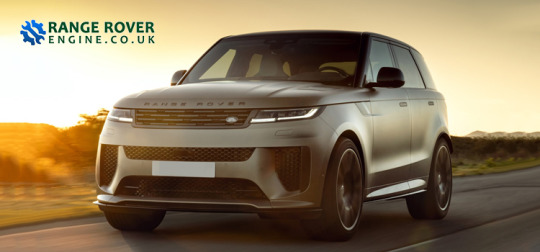
2025 marks a new era for Range Rover engines, introducing cutting-edge powertrains that blend performance, efficiency, and luxury. From robust V8s to advanced hybrids, the latest Range Rover lineup offers a spectrum of engine options designed to satisfy diverse driving preferences. Whether you're towing off-road gear, cruising in comfort, or seeking eco-conscious mobility, there's an engine tailored to your needs. In this article, we explore the standout features across the petrol, diesel, mild‑hybrid, plug‑in hybrid, and flagship V8 models. We'll also touch on the growing market for reconditioned engines—a sustainable choice for owners seeking reliable, rejuvenated performance. Each section delves into performance specs, technological advancements, and real-world benefits, ensuring you understand what powers the 2025 Range Rover and why these engines set new benchmarks in the luxury SUV segment.
Turbocharged Inline-Six Mild‑Hybrid (P400)
The entry engine for 2025’s Range Rover is the 3.0‑liter turbo‑charged inline‑six, named P400, paired with a 48‑volt mild‑hybrid (MHEV) system. This variable‑valve engine delivers 395 hp and 406 lb‑ft of torque, offering smooth, responsive acceleration while prioritizing fuel efficiency. The integration of a belt-driven starter-generator captures kinetic energy during braking, reducing fuel consumption and CO₂ emissions in city driving scenarios. The MHEV setup enables regenerative braking and engine-off coasting, making it ideal for urban commutes and cruise control routines. To complement its efficiency, the eight-speed automatic transmission provides seamless gear shifts that enhance comfort. Real-world testing confirms that the P400 powertrain delivers refined power delivery, with a sufficiently hushed cabin experience for its class . It's well‑suited for buyers valuing a balance between performance, economy, and luxury. For Range Rover owners considering reconditioned engines, a reconditioned P400 can offer nearly the same reliability and efficiency at a lower cost. This makes it an excellent candidate for those aiming to preserve premium Range Rover dynamics while being budget‑ and eco‑savvy.
Twin‑Turbo 4.4L Mild‑Hybrid V8 (P530)
Stepping up in performance, the P530 borrows technology from BMW’s collaborative engine program, offering a 4.4‑liter twin‑turbo V8. This powerhouse claims 523 hp and 553 lb‑ft of torque, coupled with the same eight-speed automatic and 48‑volt mild‑hybrid setup. The electric-assist keeps turbo lag minimal, delivering vigorous and instantaneous throttle response. With air suspension and torque-vectoring, the Range Rover feels balanced and dynamic, even with its enormous heft. Performance figures are equally compelling: 0–60 mph in just 4.3 seconds, towing capacity up to 8,200 lbs, and a top speed of 155 mph. This engine resonates with buyers who crave visceral power but desire the refinement and efficiency of hybrid assistance. A reconditioned P530 engine, fully serviced and tested, can deliver close‑to-new performance and longevity. This makes it a desirable option for luxury SUV enthusiasts seeking V8 muscle with a nod to sustainability and affordability.
Plug‑In Hybrid Inline‑Six (P550e)
For eco-conscious drivers, the P550e plug-in hybrid (PHEV) offers a compelling blend of electric efficiency and petrol power. This 3.0L turbo-inline‑six mates with an electric motor to produce 543 hp and 590 lb‑ft, featuring an EPA-rated combined fuel economy of 21 mpg with up to 53 MPGe in electric mode. The vehicle offers a notable electric-only range of around 50 miles, ideal for daily commutes. Charging to 80 percent takes less than an hour using a DC fast charger, making it practical for longer trips. The P550e maintains impressive towing capacity of 6,600 lbs, blending utility and eco-conscious credentials. Buyers considering used or certified reconditioned engines may find that PHEV powertrains—especially battery‑assisted systems—require specialized refurbishment, influencing cost and complexity. Yet, with proper conditioning, a reconditioned PHEV package can deliver strong value: luxury performance with greener credentials.
Plug‑In Hybrid V8 (P615e)
The P615e variant combines electric power with Range Rover’s flagship V8, creating a luxury SUV powerhouse. While official full plug-in hybrid specs aren’t widely published, it’s expected to parallel the P550e’s electric systems but with the 606 hp and 553 lb‑ft of the P615 V8. This blend produces ultra-smooth, high-torque delivery with a silent electric mode for refined driving. With battery and EV systems similar to those in P550e, P615e allows all-electric urban driving paired with the commanding presence of a V8. Combined with air suspension and adaptive dynamics, the P615e offers both off-road dominance and luxurious comfort. Considering reconditioned engines, P615e units—due to their complexity—may require premium refurbishment. However, for anyone looking to own ultra-luxury Range Rover performance at reduced cost, a reconditioned P615e powertrain delivers unmatched power with hybrid versatility.
Turbo Diesel Inline‑Six Mild‑Hybrid (D350)
Although diesel usage is waning in many markets, the D350 variant—a 3.0L twin-turbo diesel inline‑six with mild‑hybrid—remains available in certain regions where torque and fuel economy reign supreme. Producing approximately 350 hp, the D350 delivers an impressive 700 Nm torque between 1,500 and 3,000 rpm. Diesel MHEV smooths out idle and improves efficiency, capturing energy during deceleration for better urban MPG. Ideal for extensive highway driving, D350 is capable of long-distance cruising with efficiency and towing capacity comparable to its petrol siblings. Diesel owners often embrace reconditioned engines, and a reconditioned D350 can offer enduring reliability and reduced cost—critical in markets favoring diesel longevity. Such engines retain high torque, ruggedness, and fueling savings, making them desirable in regions with favorable diesel infrastructure and cost.
All-Electric Range Rover EV Preview
While not entirely engine-focused, the upcoming all-electric Range Rover, slated for late 2025, represents a major shift. It promises near 400-mile range, 0 to 62 mph in around 4.5 seconds, and maintains traditional off-road capability including wading depth up to 850 mm. Engineers developed advanced thermal management to prevent performance loss even in extreme temperatures (e.g., 50 °C desert testing). Although this model doesn’t feature an internal combustion engine, it’s worth noting for comparative context; no reconditioning applies—but given its zero‑emissions appeal, it’s part of Range Rover’s powertrain evolution and relevant for buyers comparing combustion vs. electric longevity.
Engine Technologies & Thermal Management
Across all powertrains, Range Rover incorporates cutting-edge engine technologies. Mild‑hybrid systems—common in P400, P530, and D350—utilize regenerative braking and starter-generators to enhance efficiency and smooth idle. Twin‑turbo systems in both 3.0L and 4.4L engines reduce lag and expand power bands, while direct fuel injection optimizes combustion. High-end models like P530 and P615 feature adaptive oil coolers, turbocharging with intercooling, and electronically-controlled exhaust valves for enhanced performance and sound management. Plug‑in hybrids add high voltage architecture and DC charging, enabling fast charging and distinct EV modes.
Diesel MHEVs include emissions reduction tech and particulate filters
Additionally, EV thermal strategies tested in extreme environments point to Land Rover’s refined heat-management systems—crucial for maintaining engine and battery efficiency under stress . These advancements maximize power, responsiveness, and durability under harsh conditions—benefits that extend to reconditioned units when components like turbos, coolers, and hybrid modules are rebuilt or replaced to OEM standards.
The Role of Reconditioned Engines
Reconditioned engines—carefully rebuilt and refurbished powerplants—are increasingly attractive amid economic and environmental pressures. For Range Rover engines, particularly the P400 or the diesel D350, reconditioning can significantly reduce acquisition costs while extending engine life. Certified rebuilds include machining, new gaskets, updated hardware, and tested electronics. With heavier engines like the P530 V8 or P615 V8, reconditioned versions must include high‑performance balancing, turbo re-certification, and mild‑hybrid system validation. A reconditioned P530 can deliver near-factory performance at a fraction of replacement cost. Similarly, diesel engines like the D350—renowned for longevity—are ideal candidates for reconditioning, with robust block and head design. Moreover, plug‑in and hybrid engines may benefit from reconditioning of electric components—though this demands specialized knowledge. Ultimately, reconditioned engines contribute to sustainability by extending powertrain life, reducing resource use, and supporting a circular economy. For buyers who want top-tier Range Rover performance with reduced costs, these rebuilt engines are a smart, eco-conscious alternative. Read the full article
0 notes
Text
How Does the Range Rover 3.0 Engine Support Adaptive Cruise Control in the HSE Model?

The Range Rover HSE is renowned for its luxury, innovation, and performance. Among its standout features is Adaptive Cruise Control (ACC), a system that automatically adjusts the vehicle’s speed to maintain a safe distance from the vehicle ahead. This function relies heavily on the seamless coordination between software, sensors, and the vehicle’s powertrain—especially the engine. The Range Rover 3.0 engine, known for its refinement and capability, plays a critical role in delivering the smooth and responsive behavior expected from adaptive systems in the HSE trim. Powered by an advanced 3.0-litre inline-six engine with mild hybrid support, the HSE delivers both power and control. We explores how the Range Rover engine supports Adaptive Cruise Control operations and how reconditioned engines also offer the same reliability and integration when properly restored. We’ll break down the interaction between the engine and ACC systems, emphasizing precision, safety, and efficiency.
Understanding Adaptive Cruise Control in the HSE Model
Adaptive Cruise Control (ACC) in the Range Rover HSE is designed to automatically maintain a safe distance from vehicles ahead. Unlike conventional cruise control systems that only maintain a set speed, ACC dynamically adjusts throttle input and braking. This is especially beneficial during long highway drives or in slow-moving traffic. The system relies on radar sensors, cameras, and engine integration to measure distances and detect changes in traffic flow. The Range Rover 3.0 engines is central to this process. When ACC commands acceleration or deceleration, the engine responds almost instantly to ensure smooth and safe adjustments. The system must rely on the engine’s responsiveness and precise torque delivery for these transitions to be seamless. Even when using reconditioned engines, the ACC system can function optimally—provided the engine has been rebuilt to OEM standards. The engine must support all necessary communication protocols and sensor integrations to maintain the fluid control required for ACC operation in the HSE model.
The Role of the 3.0 Engine's Mild Hybrid System in Smooth Acceleration
One of the key attributes of the Range Rover 3.0 engine is its mild hybrid electric vehicle (MHEV) system. This system enhances the engine’s responsiveness by utilizing a 48V electric motor that assists during acceleration. In Adaptive Cruise Control scenarios, this electric support smooths out any lag between the ACC system's commands and the engine’s actual performance. When the ACC system demands a speed increase to keep pace with traffic, the mild hybrid system adds instant torque, allowing the engine to respond quickly without jerks or sudden surges. This makes the ride feel more refined and helps maintain passenger comfort. Reconditioned engines that include properly rebuilt or replaced MHEV components can replicate the same level of smoothness. High-quality reconditioning ensures that the electric assist and regenerative braking systems work in harmony with the ACC module, keeping the performance consistent and luxurious.
Engine Braking and Deceleration Support During Cruise Control
Engine braking is a natural way to reduce speed without relying entirely on the vehicle’s braking system. In Adaptive Cruise Control mode, the Range Rover 3.0 engine contributes to deceleration by reducing fuel injection and allowing internal friction to slow the vehicle. This technique provides more control and preserves brake life. When descending slopes or approaching a slower vehicle, ACC intelligently uses engine braking along with actual brakes to moderate the car’s speed. The system must communicate effectively with the engine to execute these smooth transitions. For reconditioned engines, this ability is preserved when the ECU is correctly programmed and compatible with ACC features. Even a rebuilt Range Rover engine, when restored with precision, will support the same level of integrated deceleration and braking, making it suitable for high-tech driver assist systems.
Adaptive Throttle Control for Changing Traffic Conditions
In urban or congested traffic, Adaptive Cruise Control faces a different challenge: frequent start-stop movement. The Range Rover 3.0 engine meets this challenge through its finely tuned throttle control, which allows micro-adjustments to power delivery. The inline-six design, combined with turbocharging and hybrid assistance, ensures that the engine can ramp power up or down smoothly and accurately. These adjustments are especially noticeable during stop-and-go traffic, where ACC must restart the vehicle and maintain low speeds while adjusting spacing. Reconditioned engines that include restored throttle bodies, recalibrated ECUs, and hybrid components maintain this precision. So long as the rebuilding process follows factory-grade procedures, reconditioned Range Rover engines remain fully capable of providing the adaptive throttle modulation needed for modern cruise control features.
Integration with Forward Collision Detection and Safety Systems
The ACC system in the Range Rover HSE is linked with forward collision detection, which uses sensors and predictive algorithms to identify potential collisions. If a threat is detected, the engine management system quickly reduces throttle input or cuts power entirely to help avoid or minimize impact. The 3.0 engine’s electronic management system must work in real time with these sensors. Its rapid response rate and ability to quickly alter torque output play a crucial role in ensuring the vehicle reacts instantly to danger. The smooth integration between the ACC and the engine enhances overall safety and confidence on the road. Reconditioned engines, when fitted with updated software and tested ECU configurations, can function seamlessly with these safety systems. These engines are thoroughly inspected to ensure that all electronic connections and responses are in line with safety standards.
Enhancing Fuel Efficiency Through Intelligent Cruise Modulation
One of the understated benefits of Adaptive Cruise Control is its ability to optimize fuel consumption. The Range Rover 3.0 engine, with its mild hybrid support, contributes significantly to this by reducing unnecessary acceleration and deceleration events. By maintaining consistent engine loads and using regenerative braking, the system ensures fuel-efficient cruising. This efficiency is amplified during long highway journeys where minor throttle changes can lead to significant fuel savings. The mild hybrid system further assists by powering auxiliary components and allowing smoother stop-start functionality. Reconditioned engines with properly functioning hybrid modules and efficient combustion characteristics can match these fuel-saving features. When rebuilt correctly, they maintain tight tolerances and electronic calibration, ensuring minimal fuel consumption while supporting ACC functionality.
Communication Between the Engine ECU and Cruise Control Modules
Behind the scenes, complex data exchange occurs between the engine control unit (ECU) and the adaptive cruise control module. The Range Rover 3.0 engine’s ECU processes throttle inputs, brake pressure, torque requests, and regenerative braking status in real time. ACC relies on this live data to make informed decisions about vehicle speed and spacing. The ECU must not only interpret these signals quickly but also execute changes to engine performance instantaneously. The effectiveness of ACC is directly tied to how well the engine ECU responds to this continuous stream of data. For reconditioned engines, ECU compatibility and calibration are key. During engine restoration, specialists ensure that the ECU supports the required protocols and software versions needed to interact with modern driver-assist systems. When this is done correctly, reconditioned engines offer the same reliability and responsiveness as new units.
Maintaining Comfort and Refinement in Cruise Conditions
Luxury vehicles like the Range Rover HSE are expected to deliver not just functionality but also refinement. The 3.0 engine contributes to this by offering near-silent operation, smooth power transitions, and vibration-free performance. When ACC is active, any roughness or delay in power delivery can negatively impact the driving experience. The six-cylinder configuration, along with advanced engine mounts and noise-reducing components, ensures that the engine runs smoothly even during frequent adjustments by the cruise control system. The mild hybrid’s electric motor also reduces engine strain at low speeds, enhancing comfort. A properly reconditioned Range Rover engine can replicate this experience. Noise-dampening materials, engine balancing, and professional tuning during reconditioning ensure that luxury and comfort are preserved. This means even with a reconditioned engine, the HSE model maintains its hallmark smoothness. Read the full article
#RangeRover3.0Engine#RangeRover3.0EngineForSale#RangeRover3.0Engines#RangeRover3.0EnginesforSale#ReconditionedRangeRover3.0Engines#ReconditionedRangeRover3.0Enginesforsale
0 notes
Text
#볼보xc40 볼보자동차코리아가 XC40 블랙 에디션(Black Edition)을 온라인으로 100대 한정 판매합니다. 이번에 한정 판매하는 XC40 블랙 에디션은 2024년 10월에 97대 한정 판매했던 모델과 마찬가지로 외부를 완전히 검은색으로 꾸미고 실내 역시 검은색 내장재와 고급스러운 항목으로 구성한 모델입니다.
#compact suv#마일드 하이브리드#볼보#소형 suv#한정 모델#한정 판매#한정판#limited edition#mhev#mild hybrid#SUV#volvo#volvo cars#xc40#xc40 black edition#xc40 블랙 에디션
0 notes
Text
https://www.u-obd.com/product/w223-w206-battery-test-bench/ Mercedes-Benz W223 S-Class, W206 C-class, X254 GLC-class car 48V Lithium battery, 44.16V Lithium battery, ignition EZS Module, Airbag module, ECU, ABS module, Powertrain PTCU test bench.
W223 #W206 #x254glc #MercedesBenzMHEV #mercedesbenz48v #boschbattery #glcbattery #MED17 #BenzMildHybrid
1 note
·
View note
Text
0 notes
Text
2025 Jaguar XF Engine Breakdown: Horsepower, Torque, and Fuel Efficiency Explained

Introduction: The 2025 Jaguar XF Engine lineup continues to maintain the marque’s reputation for refined performance and British engineering brilliance. As luxury sedans evolve in an era of electrification, Jaguar remains committed to a range of petrol and diesel powertrains, designed to strike a balance between spirited driving and everyday usability. Explore every detail of the 2025 Jaguar XF engine lineup, focusing only on the petrol and diesel variants, from horsepower and torque to fuel efficiency. Understanding the 2025 Jaguar XF Engine Lineup The Jaguar XF Engine offerings for 2025 are powered by Jaguar Land Rover’s well-known Ingenium family engines, developed for efficient but spirited performance. These turbocharged four-cylinder units have been finely tuned over successive generations. For buyers seeking petrol or diesel options, the XF’s powertrain models now deliver improved performance metrics, lower emissions, and effortless driving characteristics. While many automakers are moving especially to electrified models, Jaguar has designed a refined internal combustion experience with its 2025 XF sedan. The Jaguar XF Engine continues to serve those who still want the mechanical feedback and character only typical fuel engines can provide. Petrol Variants: Refined Power and Smooth Torque Delivery The 2025 Jaguar XF petrol engine comes equipped with a 2.0-litre turbocharged inline-4, designed with both responsiveness and efficiency in mind. This petrol engine is available in two tuning configurations: the P250 and P300, each offering a different output according to various driving needs. The P250 petrol engine produces 246 horsepower and approximately 365 Nm of torque, maintaining a balance between urban usability and motorway performance. Created for drivers who admire steady acceleration without compromising economy, the P250 delivers a smooth power band aided by a smart ZF 8-speed automatic gearbox. Stepping up, the P300 petrol variant improves the Jaguar XF Engine’s power delivery to 296 horsepower and 400 Nm of torque, bringing sportier acceleration and a more engaging throttle response. This version is packed with all-wheel drive (AWD) as standard, providing superior traction and confidence under dynamic driving conditions. This AWD setup, coupled with the P300, guarantees the XF remains planted even during aggressive cornering or turbulent weather. The smooth integration of power and accuracy in the P300 variant reaffirms the Jaguar XF Engine's performance legacy. Diesel Variant: Torque-Rich and Efficient For drivers giving value to torque, cruising comfort, and long-distance efficiency, the 2025 Jaguar XF offers a diesel variant. The 2.0-litre D200 diesel engine is outstanding for those who still favour typical fuel economy and low-end pulling power. The Jaguar XF diesel engine generates 201 horsepower and a commanding 430 Nm of torque, perfect for both city traffic and prolonged motorway drives. With its mild-hybrid technology (MHEV), the D200 combines robust fuel savings with reduced CO2 emissions, bringing an advanced twist to the diesel experience. The MHEV system enables the diesel XF to recuperate energy during braking and smoothly restart the engine during stop-start conditions. This technology impressively boosts efficiency, making the diesel XF one of the most affordable premium sedans in its segment without sacrificing performance.Where petrol models offer a zippy and responsive feel, the diesel engine influence with its low-rev torque, making overtaking and climbing hills comfortably smooth. Drivers wanting comfort and fuel economy will find the D200 to be an exemplary Jaguar XF Engine configuration. Fuel Efficiency: Performance Meets Practicality Fuel efficiency is increasingly essential, even for buyers of luxury sedans. The Jaguar XF petrol engine offers dynamic mileage figures for a turbocharged performance sedan. The P250 variant averages approximately 33 miles per gallon (MPG) in combined driving cycles, while the more potent P300 delivers roughly 31 MPG, which is incredible considering its AWD system and higher power output. In comparison, the Jaguar XF diesel engine takes the lead in overall efficiency. Due to its mild-hybrid technology and optimised turbocharging, the D200 achieves a blended MPG of around 52, making it the appropriate choice for high-mileage drivers or frequent motorway users. This difference in fuel consumption between petrol and diesel variants shows Jaguar’s dedication to delivering a balanced engine range for different customer profiles. Even if your priority is dynamic tackling or lower fuel bills, the Jaguar XF Engine options are designed for both. Torque: The Hidden Hero Behind Performance Torque is often overshadowed by horsepower in engine discussions, but it’s an equally vital metric, especially for actual driving. The Jaguar XF petrol engine, specifically in its P300 guise, delivers 400 Nm of torque, peaking at lower RPMs for faster responsiveness. This enables the XF to surge forward confidently, perfect for overtaking and agile corner exits. Meanwhile, the Jaguar XF diesel engine generates a substantial 430 Nm of torque, offering that characteristic diesel surge of low-end power. This makes the diesel XF ideal for highway cruising or city stop-start traffic, where torque is more valuable than outright speed. Both engine types are designed for smooth delivery, assisted by Jaguar’s advanced 8-speed automatic transmission. Gear shifts are instant and unobtrusive, contributing to a composed but eager driving experience. The Jaguar XF Engine's torque mapping is particularly optimised to guarantee the driver feels in control, even if gliding through urban roads or handling winding B-roads. Driving Dynamics: Engine Influence on Handling A notable part of what makes the XF special lies in how the engine dynamics interact with chassis tuning. The lightweight aluminium-intensive body structure decreases the overall weight, which in turn enables each engine, be it petrol or diesel, to perform at its ideal efficiency. The P250 and P300 petrol engines bring a more playful advantage to the XF, with tighter throttle response and aggressive acceleration curves. On the other hand, the D200 diesel engine provides a more grounded experience, exemplary for those who admire a composed and comfortable drive. Jaguar's Adaptive Dynamics system and configurable driving modes improve the engine experience further, enabling drivers to personalise the throttle, steering, and suspension behaviour. These adjustments directly affect how each Jaguar XF Engine performs under numerous road conditions and driver preferences. Engine Longevity and Maintenance Considerations The 2025 Jaguar XF Engine models are designed with durability in mind. Both petrol and diesel variants use powerful aluminium construction, combined exhaust manifolds, and the latest cooling systems. These design elements not only enhance performance but also reduce engine stress under heavy loads. Regular maintenance for the petrol variants is simple, with scheduled oil changes and filter replacements suggested every 10,000 miles. Diesel engines, specifically with MHEV components, benefit from low running costs but may need periodic DPF regeneration, particularly in urban-only use. Jaguar has also combined predictive maintenance alerts in the XF, notifying drivers of service needs before issues arise. This smart system guarantees the Jaguar XF Engine remains in excellent condition, supporting both performance and reliability over the long term. Why the 2025 Jaguar XF Engine Still Matters While the industry shifts toward electrification, the Jaguar XF holds its ground with a petrol and diesel range that prioritises dynamic driving. The petrol models deliver responsive, excellent acceleration, perfect for those who enjoy driving as part of the luxury experience. On the other hand, the diesel variant remains a practical but powerful choice for drivers focused on range, fuel economy, and torque-heavy performance. By improving its petrol and diesel powertrains instead of rushing toward full electrification, Jaguar has designed an engine portfolio that remains deeply connected to typical luxury performance. Each engine type serves a different driver profile, but all are united under the brand’s ethos of advancement, dynamism, and brilliance. Whether you select the agile P300 petrol engine or the long-legged D200 diesel, the 2025 XF offers a Jaguar XF Engine experience that is unrivalled in this segment. With smart power management, advanced transmission systems, and a chassis designed to maximise engine potential, the 2025 XF remains a compelling option for discerning drivers. Conclusion Selecting between the petrol and diesel variants of the Jaguar XF Engine only depends on your driving style, fuel preferences, and performance expectations. The petrol P250 and P300 options are ideal for those looking for sharper throttle response and a more dynamic drive. Meanwhile, the D200 diesel variant shines in long-distance efficiency, everyday torque, and mild-hybrid savings. While considering the next luxury sedan, remember that Jaguar’s 2025 XF Engine lineup is more than just a power source; it's the soul of a car designed for excellence. With thoughtfully tuned performance, actual efficiency, and a commitment to internal combustion craftsmanship, the Jaguar XF proves that great engines still have a place in tomorrow’s roads. For professional advice, engine replacements, or performance upgrades, visit Range Rover Engine Specialists, your reliable partner for premium Jaguar engines and services are designed according to the needs of XF owners. FAQs: What engine options are available for the 2025 Jaguar XF?The 2025 XF offers two petrol options (P250 and P300) and one diesel model (D200) from the Ingenium engine family.What is the most fuel-efficient engine in the 2025 Jaguar XF?The D200 diesel with mild-hybrid tech is the most efficient, delivering up to 52 MPG in combined driving cycles.Which XF engine delivers the best performance?The P300 petrol engine offers the highest output with 296 hp and AWD, excellent for sporty, responsive driving.Does the diesel XF require special maintenance?It may need occasional DPF regeneration in city use, but it benefits from mild-hybrid efficiency and lower running costs.Is the 2025 Jaguar XF a good choice over electric models?Yes, if you value typical driving dynamics, refined internal combustion, and versatile petrol or diesel options. Read the full article
#JaguarXFEngine#JaguarXFEngineforsale#JaguarXFEngineLineup#JaguarXFEnginesupplyandfit#JaguarXFengines#reconditionedJaguarXFengines#replacementJaguarXFEngine
0 notes
Text

Mercedes-Benz W205, W213, W222, W167 Chassis car C-Class, E-class, S-Class, GLE-class Mild-Hybrid with 48 Volt Lithium battery usually report 48V on-board electrical system function impairment, after repairing, can test the battery on bench, diagnose, read data stream, activate the 48 V output on bench. No need install the battery on car to verify the function. https://ecudepot.com/product/mb-48v-test-platform/
MHEV #mercedesbenzw213 #w167gle #W205mhev #W222MHEV #mildhybridcar #b183387 #b183349 #actuatorblocked #B183371 #48vbattery #benzlithiumbattery #xentrytips #dcdcconverter
0 notes